Resources

Nancy Lynne Westfield Associate Professor of Religious Education Drew Theological School Phil Salter, a current student and muse of this Blog, in describing himself as a seminarian, said, “I am learning on the fly.” Intrigued by this notion, I have been thinkalating … Habakkuk has come to mind…. Recorded in..
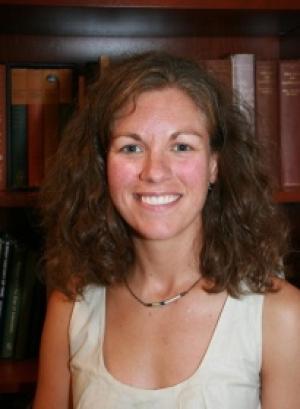
Molly Bassett Associate Professor of Religious Studies Georgia State University On Monday, I told the students that for the first time since I started teaching I was blown away by the entire class’s projects. Their podcasts are fantastic, and you can listen to them here. I’m tempted to keep gushing...
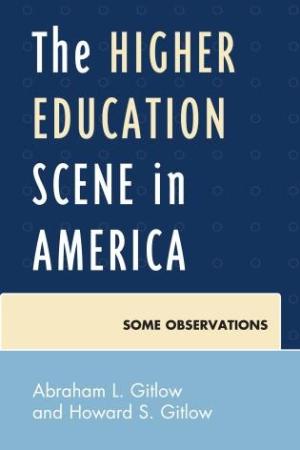
Higher education in the U.S. is hardly a utopia. Despite common mischaracterizations in the media, neither is it an ivory tower looming, pristine and untouched, over the pedestrian affairs of plebian life below. Rather it stands in the center of academic life like a dilapidated monument which we tirelessly remodel and renovate to make relevant and meaningful in the present day and age. But what is it that needs to be preserved and what needs to be updated? Perhaps it is a kind of perverse patriotism which makes American academics believe that a free society is dependent on what the Gitlows describe as the “tripartite” academic mission of American universities: the transmission of knowledge, the extension of knowledge, and development of critical thinking (165). Academics, however, cannot ignore the other mission of higher education in America… the preparation of students for employment. It is this open acknowledgement that institutions, and those actors inside them, are working with multiple – sometimes harmonious and sometimes contentious – missions in mind, which makes the Gitlows’ book a refreshing read. Perhaps it is due to the fact that this father and son team have spent a combined seventy-five years in academia, not just as scholars but also as administrators, that their combined work presents such a reasoned approach. The authors address some of the most daunting challenges that higher education in the U.S. is currently facing in chapters entitled “The Fundraising Challenge,” “The Budgetary Challenge and Fiscal Responsibility,” “The Academic Pecking Order and the Unionization of Academic Staff,” and “Conflicts of Interest and Division I Sports.” The Gitlows also revisit some of the most devastating events American universities have faced in the last fifty years, such as the economic crisis of 2008-2009 in which schools that relied too heavily on a single source of funding found themselves strapped for cash if not perilously in the red. As new models for higher learning, such as MOOCs (Massive, Open, Online Courses) and for-profit universities, challenge the standard model of the American college experience, the authors suggest that readers should evaluate what type of threat these new modes of learning actually pose to the underlying missions of higher education. The Gitlows provide a rather optimistic view of MOOCs, deeming their introduction as “evolutionary, not revolutionary” (182). The authors see MOOCs as altering but not replacing the traditional collegiate model. For-profit institutions (like the University of Phoenix), although presenting a seemingly daunting visage to the traditional college model in the early 2000s, were finally reined in when new rules regarding federal student loans were implemented by the government in 2010. The authors suggest that now that they are being held accountable for abuses, for-profit institutions will, like MOOCS, continue to alter the landscape of higher education, but they will not bulldoze it and build a glorified strip mall of education. So if the largest threats to higher education in America are not MOOCs or for-profit institutions… what are they? The Gitlows point to conflicts of interest and Division I sports representing major threats to U.S. higher education. They write, “a lurking danger for the academic institution is the possible distortion of research motivation and faculty priorities as they assess their institutional responsibilities” (120). Research and the proliferation of patents generated by universities can be both a blessing and a curse. While the authors might present a rather reasoned argument for the nuances and complexities involved in evaluating potential threats to higher education in the U.S., they do not mince words regarding the corrosive effect Division I sports has on the academic foundation of American universities. The authors support a rather unorthodox solution to the ills that plague academic institutions which house sports empires... one that recommends “breaking the power of the NCAA and ESPN” and one which, the authors openly acknowledge, would require a massive overhaul of the current system (146). While a must read for anyone contemplating a future career as a university president or provost, this book also proves to be insightful to administrators, faculty, and policy makers, or anyone whose professional life is grounded in the world of higher education.
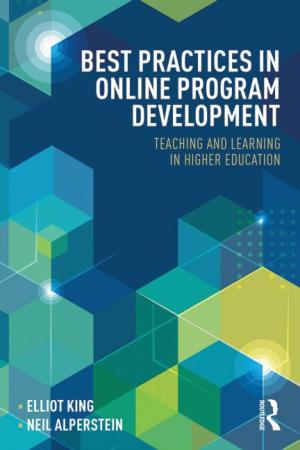
This compact guide on building online programs has practical tips for faculty and administrators in higher education who are at various stages of online delivery. While mostly aimed at beginners, the book has ideas for institutions in the first, second, third, and fourth generations of distance learning, whether it is just one course, one department, a program or online delivery is fully integrated into the university’s strategic plan. The authors share from personal experience, surveys of faculty and students, as well as best practices from accrediting bodies to assure the reader will enter the online delivery method with eyes wide open. The book also has helpful suggestions for administrators and instructors who have experience with online education, but are trying to move their program to the next level. After a brief history of distance education and its place within higher education, the authors cite a study by the Babson Survey Research Group indicating that 6.7 million students in 2011 took an online class (a jump of 9.3 percent from 2010) and one-third of college students had taken at least one online class (compared to less than 10 percent in 2003). The authors state many reasons for offering online classes: overcoming space limitations, reaching students who were not accepted in the traditional admissions process, non-traditional students and students with disabilities—who may not otherwise come to campus because of mobility or accessibility issues. Students also choose online programs because of the flexibility to study around family, work and personal commitments. Whatever their reasons for studying online, the book emphasizes the different study skills to succeed. The authors suggest that admission offices should find a way to assess readiness to assure student success and in best practice offer an orientation, ongoing support and an ample IT staff. The authors acknowledge that teaching will be different online than in the traditional classroom and administrators may find resistance from faculty. Therefore they recommend seeking faculty volunteers to teach online. According to a 2003 study, many faculty believe that teaching online requires more time than conventional teaching and a 2012 survey revealed that two-thirds of faculty believed that the educational outcomes were inferior to face-to-face teaching. Yet the authors estimate that between 25 and 33 percent of post-secondary faculty have taught at least one course online. Faculty also perceive advantages such as greater flexibility and reaching more and a different variety of students. Of course, faculty will have to make changes to relate to online students, for example Skype office hours, being socially present, while also managing student expectations for email correspondence. Once a class is prepared it is easier to teach again and can be taught by another instructor, however universities should have a clear policy of intellectual property rights. Other benefits of online teaching are greater attention to learning outcomes, methodology and assessment. This book is not a “how to” book for instructors to develop an online class, nor is it an exhaustive manual for administrators, but it is an excellent overview and beginners guide for administrators to learn the challenges and best practices of high quality online programs.

In this insightful project, Sallee examines a largely unexamined area of gender equity in North American higher education. Sallee provides a compelling case for why faculty work-life balance considerations ought to include male faculty on the tenure-track. In eight chapters, Sallee analyzes her study of seventy male faculty members across various ranks and disciplines in four public research institutions within the Association of American Universities: Eastern University, Mid-West University, Southern University, and Western University. The study included forty-six white faculty, five Latinos and Asians respectively, and fourteen faculty of unknown ethnicity. Regrettably, other faculty of color declined participation. Interviewees serve in humanities and social sciences, sciences and engineering, and in professional schools (such as medicine and business). The author claims that gender norms still prescribe work expectation and research universities in particular still prize the male worker as the ideal worker: she calls the phenomenon hegemonic masculinity in a gendered-university. This study suggests that male faculty have to choose between being an ideal worker or an ideal father – if they are or plan to be a parent. For this study, conscientious fatherhood inevitably shapes one’s scholarly engagement and thereby affects research productivity, quality of scholarship or depth of intellectual thought, and choice of a research project undertaken. An engaged father would have fewer uninterrupted blocks of time for research, thinking, and for formulating solutions to difficult problems. This study concludes that a faculty father would generally seek safer lines of inquiry, projects that are closer to home, or that require less travel and commitments. Consequently, male faculty -- particularly those from Generation X on the tenure track -- tend to lean more towards their family roles than towards becoming ideal scholar researchers. Male faculty generally experience professional pressure and may feel penalized when they prioritize family commitments over research, publication, grant applications, and teaching. If a male faculty member prioritizes work, the study finds that their family will likely suffer. Some universities may grant accommodation for work-life balance, such as extending the tenure-clock or releasing faculty from teaching duties. Nonetheless, male faculty, especially those whose spouses are working (be it full-time or part-time in academic or non-academic appointments) tend not to use these privileges for fear that higher administration or their colleagues would regard them as less serious professionals and academics. While not all male faculty interviewed felt this pressure or experienced being shortchanged, most perceived inequitable expectations. In light of her research, Sallee offers research universities policy proposals to catalyze change. She urges that universities set the standard and correct the entrenched, unhealthy culture of hegemonic masculinity and expectation in contemporary work-life tensions. I agree with Sallee. My question is how does the increasing trend of employing adjuncts complexify her inquiry, and what changes can higher education make to facilitate a healthy employment and education culture that genuinely benefits all stakeholders, not just in research universities but in most institutions of learning?
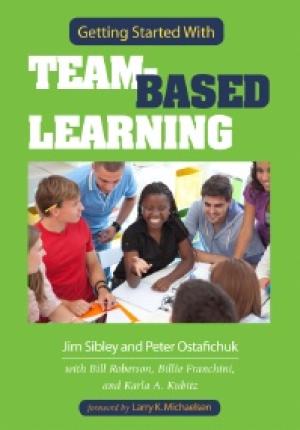
Team-based learning (TBL) was developed over thirty years ago in response to challenges posed by students coming to class unprepared as well as the need for students to apply their knowledge to authentic and complex real-world problems. In this book, Sibley, Ostafichuk, and their contributing authors offer an overview and introduction to TBL for faculty who want to get started with this model of teaching and learning. Filled with vignettes of successes and failures by faculty who have used TBL, the book concludes with appendices of resources, a variety of options to use in the classroom for implementing TBL activities, and reflections on the challenges of implementing TBL in teaching. The book is helpfully divided into three sections. Section one begins with an overview of TBL by introducing its four essential elements: (1) creating properly formed and managed permanent teams; (2) developing a readiness assurance process (RAP) to ensure motivated and prepared students; (3) using application activities which require students to use course concepts and skills; and (4) holding students accountable for their own learning. With this model of instruction the focus is shifted away from the professor to students who actively use what they have learned to solve problems. The next two chapters focus on ways to design and implement a TBL course. Roberson and Franchini’s approach to design is to begin in the middle by designing the team application activities and tasks that allow students to practice using the disciplinary concepts of the course and thus demonstrate their learning. The final chapter in the opening section (by Kubitz) provides a literature review of studies which documents the effectiveness of TBL and connects the model to a variety of learning theories (Vygotsky, Brunner, Perry, and Zull). The heart of the book is found in section two with chapters which elaborate on the four essential elements of TBL introduced earlier. Each chapter is full of practical advice and vignettes from faculty who have utilized TBL. The authors discuss, for example, the different stages of the RAP - selecting appropriate quality readings (they recommend shorter rather longer assignments), developing individual readiness assessment and team assessment tests, offering practical advice about writing good multiple choice questions and developing reading guides to assist student preparation. The key to a successful TBL course is found in the application activities which engage students’ interests. When it works, the authors argue that student focus shifts from “what is the right answer?” to discussions about “why?” and the supporting evidence. They offer a number of ways in which students may simultaneously report on the decisions made about the same problem they are working on. Courses should be designed in such a way that students are accountable and rewarded not only for their individual performances, but also for contributions to the team and overall team performance. The authors argue that for TBL to be effective, it is best to use it for an entire course rather than use it piecemeal. The book is full of practical advice, however, which is well-grounded in literature about teaching and learning so that faculty members who are hesitant to transform a course to TBL can still benefit from reading (advice such as how to write effective multiple choice questions and how to facilitate discussions). I should note that the vignettes and examples in the book from faculty who have used TBL include no one from Religious Studies. But after reviewing the book, I am motivated to try this model in my teaching.
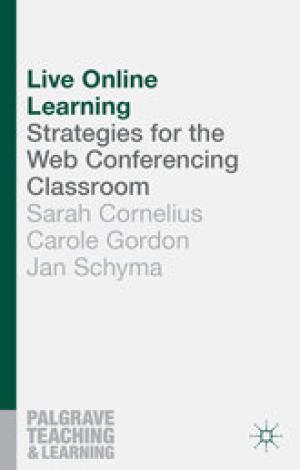
For many reasons, universities and seminaries are asking faculty to teach more courses online. As a result, professors are ever vigilant for online strategies and tools that could help them with communication, interaction, and live online collaboration between professor and learners, learner and learner, and learners and course content. For professors in religious studies and theology who want to or are required to teach live online, this book is a good place to start. Based on years of research and experience, Cornelius, Gordon, and Schyma propose best practice guidelines in using web conferencing technology and provide helpful tips for teaching that is learner centered. Each of the ten chapters begins with an outline and concludes with a helpful summary. The usefulness of this book is its breadth in the coverage of materials for teaching in a web conference classroom. Chapter 1 covers creating the virtual classroom environment by using web conferencing technology to create the learning space that inspires learning and teaching. Chapters 2 to 8 follow, in a logical manner, the actual design of a live online course and cover preparation to teach in a virtual classroom, welcoming students to the virtual classroom, bringing professor and students together to the learning space, engaging learners, gaining feedback, helping learners work together, and assessing for learning. The authors conclude in chapters 9 and 10 with thoughts and tools to help professors assess their skills in the live online teaching environment and creative and inclusive ways of using web conferencing technology to support diverse groups of learners. Within each chapter there is a wealth of information and practical suggestions. From the beginning to the end the authors cover topics and practices such as: creating learning space, strategies to inspire students and professor, exploring the technology, planning live online sessions, building trust and rapport, engaging learners through activities, collaboration and group work, effective group activities, and student centered assessment. For instance, chapter 5 provides a good example of the breadth of information as it relates to engaging learners. The authors explain the importance of engaging learners; give examples of activities that can be used in any context, followed by step-by-step practical ways to introduce learning activities and activities that maintain student engagement. What is further helpful in this chapter and each of the chapters in the book is the way the authors cleverly interweave their narrative with actual teaching and learning experiences from teachers and learners that gives genuineness to the teaching and learning situation. In summary, Live Online Learning Strategies for the Web Conferencing Classroom succeedsbecause of thebreadth of information and depth of its application. Because it is written in non-technical language, this book will be especially helpful for new instructors who are beginning to teach online live. Its focus on teaching and learning issues and student-centered learning is a welcomed resource. w

Nancy Lynne Westfield Associate Professor of Religious Education Drew Theological School When you are a teenager, at least in the 70’s, the house with abundant food and a loving mother was the place to gather. Our house had both. Unlike all the other mothers in the neighborhood, Nancy Bullock Westfield

Molly Bassett Associate Professor of Religious Studies Georgia State University “If I wanted to write, I would have taken an English class.” – Anonymous in my intro course Looking back I’ll admit that it was more last straw than “Aha!” In fact, I’m sure there were times when analogous thoughts...

One of the biggest liabilities for leaders in any system, including deans, is blind spots. Blind spots can be the result of personal bias, or of having inaccurate or insufficient information. When leaders fail to have a systemic perspective, 360...
Wabash Center Staff Contact
Sarah Farmer, Ph.D
Associate Director
Wabash Center
farmers@wabash.edu